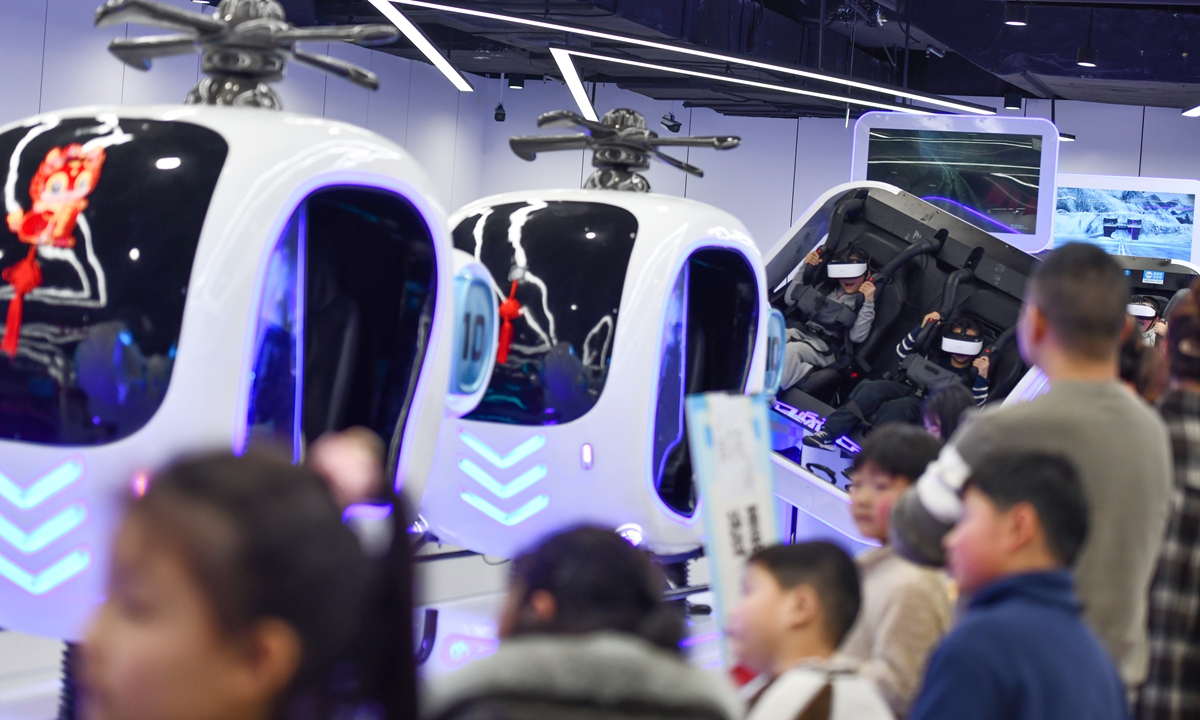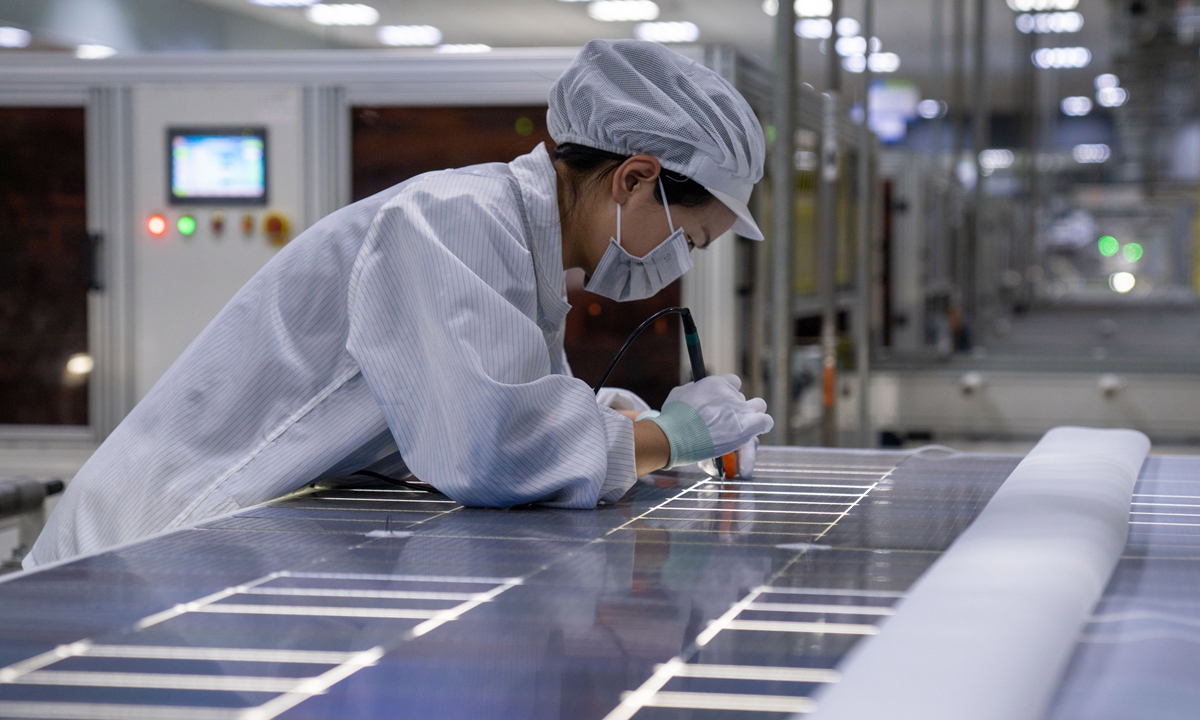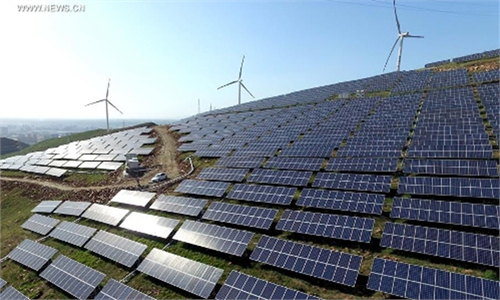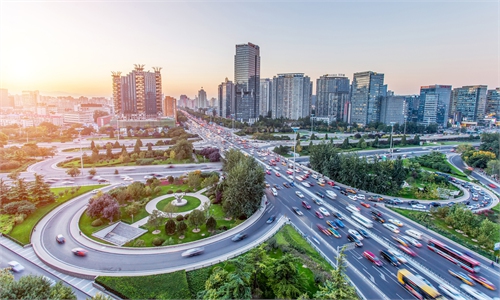IN-DEPTH / IN-DEPTH
Hometown witness: Big agricultural province's road to a future fueled by high tech, new energy
Editor's Note:
The world recently celebrated a splendid Chinese New Year, welcoming the Year of the Dragon.
During the holidays, Global Times reporters returned to their hometowns where they were reacquainted with old traditions and introduced to new post-pandemic experiences. To share their experience, we have launched the "Hometown Diary" series. Spanning from north to south, east to west, six articles will focus on different provinces, exploring the development and evolution from traditional to modern, and from economic to cultural dimensions.
This series is not only a comprehensive review of China's vast territory and diverse regional cultures but also a profound reflection of how different areas across the country maintain their identity and embrace changes.
Through the lens of hometown observations, we hope to touch the hearts of our readers, allowing everyone to find resonance in these stories and feel the warmth and vitality that hometowns provide, regardless of changes brought about by time.
This is the second installment in the series, in which we gain the perspectives of our reporters to understand how East China's Jiangsu Province keeps vigorous development with a strong engine based on local people's industriousness and tenacity, and how East China's Anhui Province explores emerging areas of high tech and new energy.

Returning to my hometown Hefei, an inland city that was once inconspicuous, after years of being away, I was surprised to witness a remarkable transformation. In the intervening time, it has become a bustling city of new energy and now boasts high-tech advancements, a testament to the power of progress and innovation.
For many years, Anhui Province and its capital Hefei were less known compared with its neighbors such as Jiangsu Province. But now the economic miracle in Hefei and Anhui has not only attracted domestic attention, but also from abroad. Hefei is now dubbed by netizens as the "strongest venture investment city" and many have rushed to the city to learn from what's been dubbed the "Hefei model."
The last time that people looked to Anhui to learn from its economic development model was 45 years ago when Xiaogang, a small village in Anhui, spearheaded revolutionary rural reform.
In 1978, 18 farmers in the poverty-stricken village took tremendous courage and risks in secretly signing an agreement to contract collective land to individual households. This bold move later spurred similar experiments all over the country which greatly fueled farmers' enthusiasm and boosted agricultural production.
Decades later, Anhui is showcasing another excellent example of economic development. Far from agriculture, the new iteration is in the high-tech industry.
As the leading industry, the new energy vehicle industry in Hefei will experience robust growth in 2023. The production of new energy vehicles reached 740,000 units, ranking among the top 5 in China. In the first three quarters, Hefei's total export of complete vehicles exceeded 100,000 units, with a year-on-year growth of approximately 50 percent, cnr.cn reported.
In Hefei, people can witness remarkable technological achievements, including a nuclear fusion project that has set global records, a space exploration laboratory aiding China's moon missions, and a quantum computer prototype capable of solving complex problems 10 quadrillion times faster than the world's fastest supercomputers. In January this year, the third-generation superconducting quantum computer "Origin Wukong" was unveiled in Hefei.
Meanwhile, as one of the first provinces to develop the new energy vehicle (NEV) industry, Anhui is on the fast track with BYD, the world's top NEV seller, based here. In 2023, BYD sold more than 3.02 million cars, the Xinhua News Agency reported. BYD has earned a great domestic and international reputation, drawing interest from global investors including Warren Buffett.
However, such vibrancy seemed remote to me until I got the chance to take a closer look during my trip to Anhui - a discovery trip of innovation, progress and pride.

Keys to success
A friend who worked as a media professional in Guangzhou, South China's Guangdong Province, quit her job and moved to Hefei to start a career at an AI company in the city.
This relocation was hard to imagine in the past as Guangdong was more economically developed than Anhui. It is normal to see people from Anhui migrating to Guangdong to work at local factories, rather than the other way around.
But she, a Guangdong native, said she quite enjoyed herself in Hefei. She said that life there is as convenient as it is in Guangzhou, and more importantly, she can find many like-minded and highly motivated people.
Statistics show that the attractiveness of Hefei has continued to increase in recent years. In 2022, the city, for the first time, attracted more than 300,000 university students and 55,000 highly-skilled individuals. It has even become a popular destination for foreigners to settle in China, according to media reports.
As I continued my exploration in my hometown, I saw more and more state-of-the-art research facilities nestled amid the urban landscape. The facility, dedicated to cutting-edge technologies, was a testament to my hometown's commitment to innovation.
The city's transformation has attracted not only scientists and researchers, but also entrepreneurs and investors. Start-up incubators and co-working spaces dot the city, fostering an environment of creativity and collaboration. An important key to the success of the Hefei model is that the local government is also an important investor in those high-tech companies.
I talked to several friends who work in Hefei to share their opinions on the Hefei model. They all agreed the good collaboration between a proactive government and an efficient market as the most important key to the success.
I was told that the local government has provided strategic direction and continuity in planning for strategic emerging industries. It also effectively utilizes state-owned assets to leverage social capital, guiding the direction of investment and introducing major industrial projects. Moreover, investments are focused on industrial development, forming a complete industrial investment and financing system. This approach has created a strong atmosphere for action and entrepreneurship.
Besides, the investment strategy emphasizes long-term growth over short-term gains. The city's investment team provides continuous support throughout the entire life cycle of a company, aiding in its development and ensuring a win-win situation for all parties involved.
These efforts, together with the emphasis on the role of the market in resource allocation and the professional development of officials, contribute to the economic miracle.
In my eyes, the success story that is Hefei is not just about the city or Anhui. It is one shining example of China's economic development which is now increasingly driven by the high-tech industry for high-quality development.
For me, while my hometown had shed its old skin and emerged as a vibrant city ready to embrace the future, many things have remained unchanged.
Despite rapid urbanization and development, my hometown has managed to retain its sense of community. Parks and green spaces have been carefully integrated into the city's design, providing a sanctuary for residents to connect with nature.
As I concluded my journey through the transformed city, I couldn't help but feel a sense of awe and pride. My hometown has defied expectations, building upon its agricultural roots a future fueled by new energy and high-tech advancements. It is a testament to the resilience and adaptability of its people, who had embraced change and harnessed it to create a better future for themselves and generations to come.
The world recently celebrated a splendid Chinese New Year, welcoming the Year of the Dragon.
During the holidays, Global Times reporters returned to their hometowns where they were reacquainted with old traditions and introduced to new post-pandemic experiences. To share their experience, we have launched the "Hometown Diary" series. Spanning from north to south, east to west, six articles will focus on different provinces, exploring the development and evolution from traditional to modern, and from economic to cultural dimensions.
This series is not only a comprehensive review of China's vast territory and diverse regional cultures but also a profound reflection of how different areas across the country maintain their identity and embrace changes.
Through the lens of hometown observations, we hope to touch the hearts of our readers, allowing everyone to find resonance in these stories and feel the warmth and vitality that hometowns provide, regardless of changes brought about by time.
This is the second installment in the series, in which we gain the perspectives of our reporters to understand how East China's Jiangsu Province keeps vigorous development with a strong engine based on local people's industriousness and tenacity, and how East China's Anhui Province explores emerging areas of high tech and new energy.

Children experience virtual reality games at the aviation science and technology museum in the Luogang Central Park in Hefei, East China's Anhui Province, on February 18, 2024. Photo: VCG
Returning to my hometown Hefei, an inland city that was once inconspicuous, after years of being away, I was surprised to witness a remarkable transformation. In the intervening time, it has become a bustling city of new energy and now boasts high-tech advancements, a testament to the power of progress and innovation.
For many years, Anhui Province and its capital Hefei were less known compared with its neighbors such as Jiangsu Province. But now the economic miracle in Hefei and Anhui has not only attracted domestic attention, but also from abroad. Hefei is now dubbed by netizens as the "strongest venture investment city" and many have rushed to the city to learn from what's been dubbed the "Hefei model."
The last time that people looked to Anhui to learn from its economic development model was 45 years ago when Xiaogang, a small village in Anhui, spearheaded revolutionary rural reform.
In 1978, 18 farmers in the poverty-stricken village took tremendous courage and risks in secretly signing an agreement to contract collective land to individual households. This bold move later spurred similar experiments all over the country which greatly fueled farmers' enthusiasm and boosted agricultural production.
Decades later, Anhui is showcasing another excellent example of economic development. Far from agriculture, the new iteration is in the high-tech industry.
As the leading industry, the new energy vehicle industry in Hefei will experience robust growth in 2023. The production of new energy vehicles reached 740,000 units, ranking among the top 5 in China. In the first three quarters, Hefei's total export of complete vehicles exceeded 100,000 units, with a year-on-year growth of approximately 50 percent, cnr.cn reported.
In Hefei, people can witness remarkable technological achievements, including a nuclear fusion project that has set global records, a space exploration laboratory aiding China's moon missions, and a quantum computer prototype capable of solving complex problems 10 quadrillion times faster than the world's fastest supercomputers. In January this year, the third-generation superconducting quantum computer "Origin Wukong" was unveiled in Hefei.
Meanwhile, as one of the first provinces to develop the new energy vehicle (NEV) industry, Anhui is on the fast track with BYD, the world's top NEV seller, based here. In 2023, BYD sold more than 3.02 million cars, the Xinhua News Agency reported. BYD has earned a great domestic and international reputation, drawing interest from global investors including Warren Buffett.
However, such vibrancy seemed remote to me until I got the chance to take a closer look during my trip to Anhui - a discovery trip of innovation, progress and pride.

A worker is checking photovoltaic modules in a company in Feidong county, Hefei, Anhui, on January 16, 2024. Photo: VCG
Keys to success
A friend who worked as a media professional in Guangzhou, South China's Guangdong Province, quit her job and moved to Hefei to start a career at an AI company in the city.
This relocation was hard to imagine in the past as Guangdong was more economically developed than Anhui. It is normal to see people from Anhui migrating to Guangdong to work at local factories, rather than the other way around.
But she, a Guangdong native, said she quite enjoyed herself in Hefei. She said that life there is as convenient as it is in Guangzhou, and more importantly, she can find many like-minded and highly motivated people.
Statistics show that the attractiveness of Hefei has continued to increase in recent years. In 2022, the city, for the first time, attracted more than 300,000 university students and 55,000 highly-skilled individuals. It has even become a popular destination for foreigners to settle in China, according to media reports.
As I continued my exploration in my hometown, I saw more and more state-of-the-art research facilities nestled amid the urban landscape. The facility, dedicated to cutting-edge technologies, was a testament to my hometown's commitment to innovation.
The city's transformation has attracted not only scientists and researchers, but also entrepreneurs and investors. Start-up incubators and co-working spaces dot the city, fostering an environment of creativity and collaboration. An important key to the success of the Hefei model is that the local government is also an important investor in those high-tech companies.
I talked to several friends who work in Hefei to share their opinions on the Hefei model. They all agreed the good collaboration between a proactive government and an efficient market as the most important key to the success.
I was told that the local government has provided strategic direction and continuity in planning for strategic emerging industries. It also effectively utilizes state-owned assets to leverage social capital, guiding the direction of investment and introducing major industrial projects. Moreover, investments are focused on industrial development, forming a complete industrial investment and financing system. This approach has created a strong atmosphere for action and entrepreneurship.
Besides, the investment strategy emphasizes long-term growth over short-term gains. The city's investment team provides continuous support throughout the entire life cycle of a company, aiding in its development and ensuring a win-win situation for all parties involved.
These efforts, together with the emphasis on the role of the market in resource allocation and the professional development of officials, contribute to the economic miracle.
In my eyes, the success story that is Hefei is not just about the city or Anhui. It is one shining example of China's economic development which is now increasingly driven by the high-tech industry for high-quality development.
For me, while my hometown had shed its old skin and emerged as a vibrant city ready to embrace the future, many things have remained unchanged.
Despite rapid urbanization and development, my hometown has managed to retain its sense of community. Parks and green spaces have been carefully integrated into the city's design, providing a sanctuary for residents to connect with nature.
As I concluded my journey through the transformed city, I couldn't help but feel a sense of awe and pride. My hometown has defied expectations, building upon its agricultural roots a future fueled by new energy and high-tech advancements. It is a testament to the resilience and adaptability of its people, who had embraced change and harnessed it to create a better future for themselves and generations to come.



